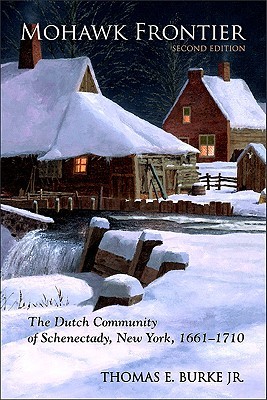| Mohawk Frontier, Second Edition: The Dutch Community of Schenectady, New York, 1661-1710 Contributor(s): Burke, Thomas (Author), Starna, William A. (Introduction by) |
|
 |
ISBN: 1438427069 ISBN-13: 9781438427065 Publisher: Excelsior Editions/State University of New Yo OUR PRICE: $29.66 Product Type: Paperback Published: February 2009 |
| Additional Information |
| BISAC Categories: - History | United States - State & Local - Middle Atlantic (dc, De, Md, Nj, Ny, Pa) - History | United States - Colonial Period (1600-1775) - History | Native American |
| Dewey: 974.744 |
| LCCN: 2008048183 |
| Lexile Measure: 1470 |
| Physical Information: 0.68" H x 6.34" W x 8.94" (0.84 lbs) 278 pages |
| Themes: - Locality - Albany-Schenectady-Troy, N.Y. - Geographic Orientation - New York - Chronological Period - 17th Century - Chronological Period - 18th Century |
| Descriptions, Reviews, Etc. |
| Publisher Description: This is the fascinating story of the Dutch community at Schenectady, a village that grew out of the wilderness along the northern frontier of New Netherland in the 1660s. Drawing upon a wealth of original documents, Thomas Burke renders an engaging portrait of a small but dynamic Dutch village in the twilight years of the New Netherland colony. Despite the proximity of the Mohawks, Schenectady's residents--when they were not quarreling amongst themselves--made their living more from farming and raising livestock than trading. Due to a scarcity of labor, Schenectady became one of the most diverse and energized communities in the region, attracting servants and tenant farmers, and paving the way for slavery. Its northern frontier location however made it a vulnerable target during the many conflicts between the French and English that erupted in the late seventeenth century. Bringing Schenectady fully out of the historical shadow of its large neighbor Albany, Thomas Burke reveals both the intricate depths of a small Dutch village and how many aspects of its story mirrored the broader histories of New Netherland and New York.This second edition of the classic history features a new introduction by William Starna, which updates key research and issues that have arisen since its initial publication. |